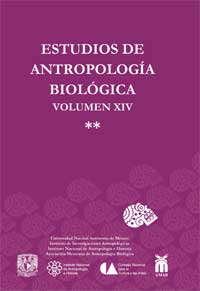Neandertales y manipulación de cadáveres
DOI:
https://doi.org/10.22201/iia.14055066p.2009.27279Keywords:
Neanderthal, burials, cut-marks, cannibalism, funerary behaviorAbstract
This paper deals with the numerous problems involved in reconstructing Neanderthal customs related to cadaver manipulations, by analyzing the available data about the discovery and the study of the different fossils. It appears that several Neanderthal individuals, of both sexes and very different ages were carefully buried, placing the bodies in several positions. Some of these burials reflect complex post-mortem manipulations, as in the case for the adult male Kebara 2. Most frequently Neanderthal fossils appeared on living floors, fragmented and mixed with stone tools and faunal remains. In some sites from East and West Europe the fragments show intentional cut-marks, especially in areas of muscular attachment, made peri- or post-mortem by using flint tools. The possible intentionality and interpretations of these striations are discussed, because some of these traces cannot be directly attributed to cannibalism or defleshing, but they could be the reflections of other funerary behaviors impossible to be deduced.
Downloads
Downloads
How to Cite
Issue
Section
License

http://creativecommons.org/licenses/by-nc-nd/4.0/

